#Spop spoilers
Text


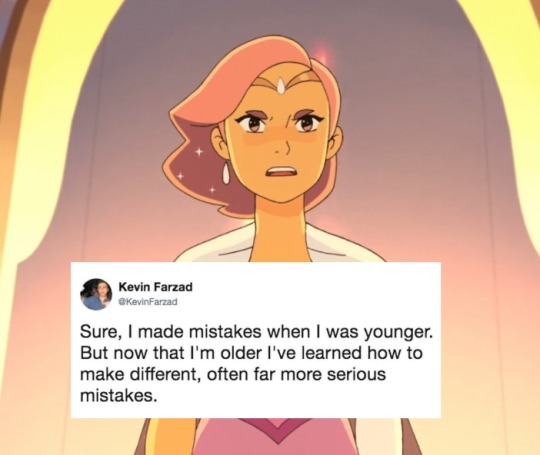
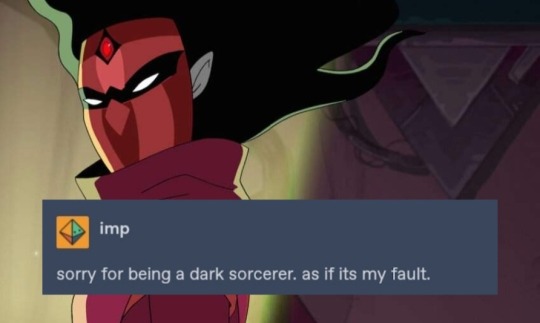

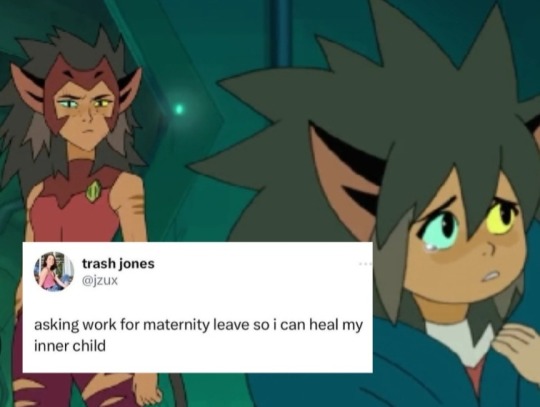

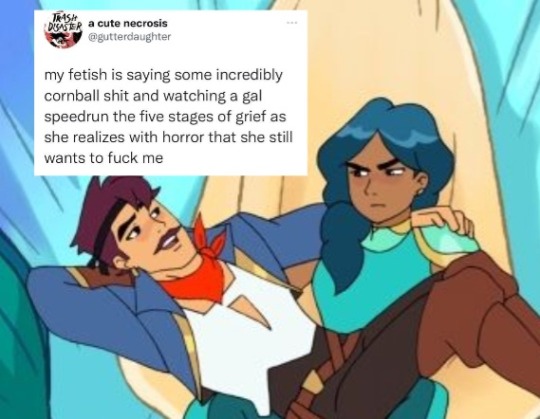

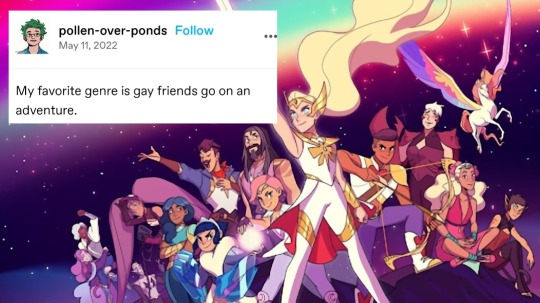
1K notes
·
View notes
Text
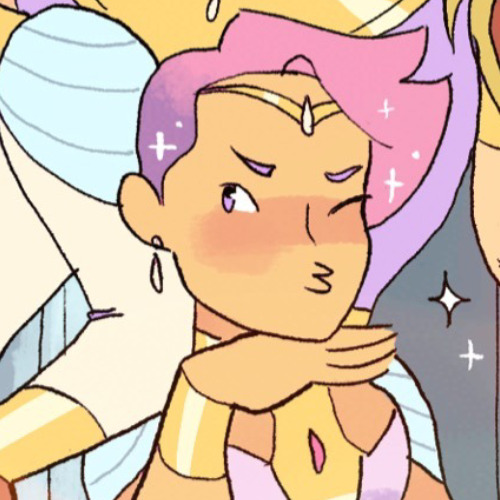

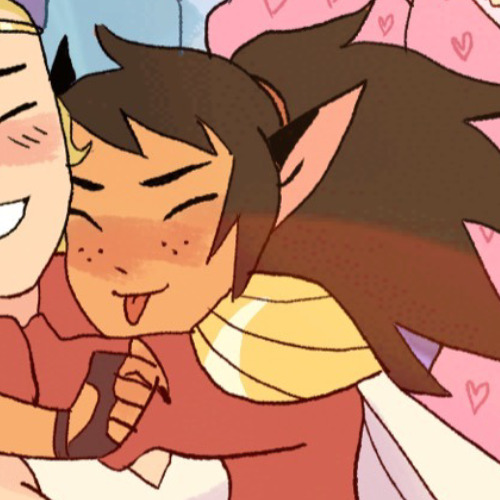
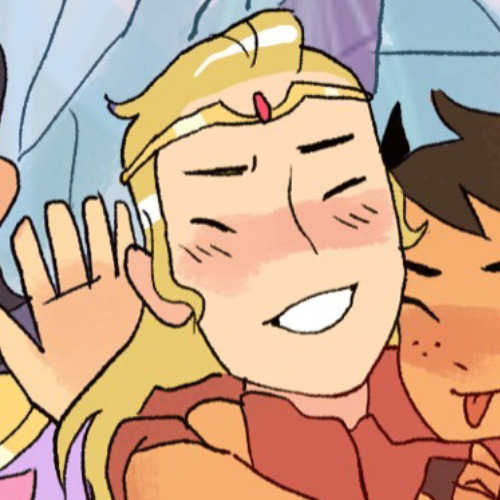
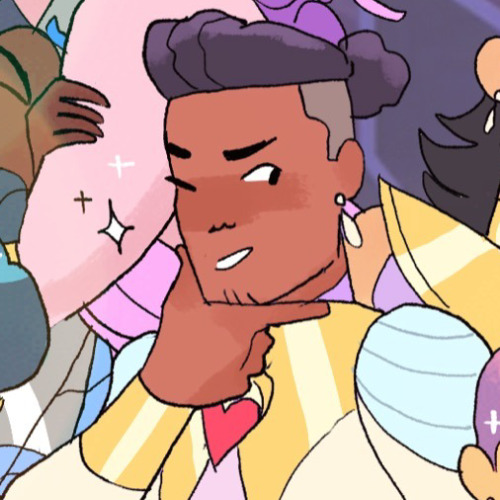


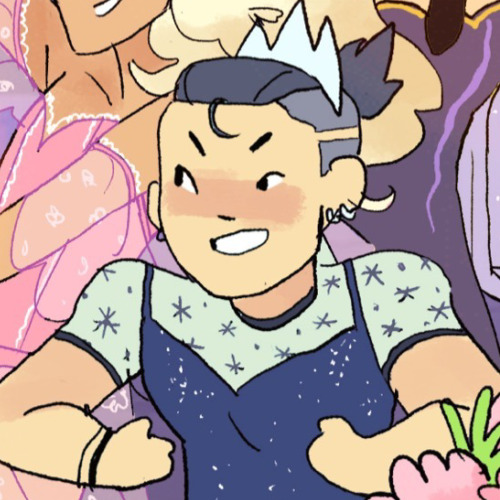

cropped some pfps out of that one anniversary art ND made! free to use without credit, literally all I did was crop. have fun!
#she ra spoilers#spop spoilers#shera spoilers#just a lil#adora#catra#catradora#glimmer#entrapta#perfuma#mermista#frosta#she ra adora#she ra catra#she ra mermista#she ra bow#she ra frosta#she ra entrapta#she ra perfuma#she ra scorpia#scorpia#spop scorpia#spop bow#spop entrapta#spop adora#spop catra#spop frosta#spop mermista#spop glimmer#she ra icons
459 notes
·
View notes
Photo
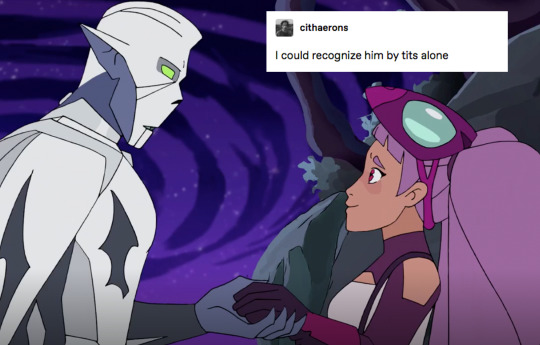
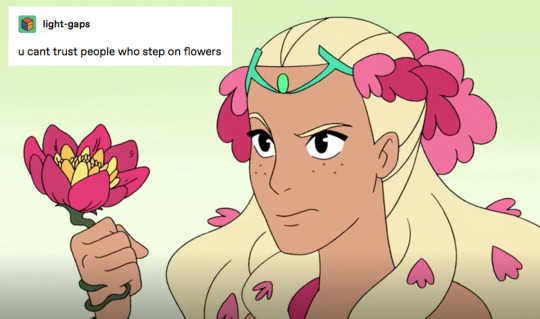



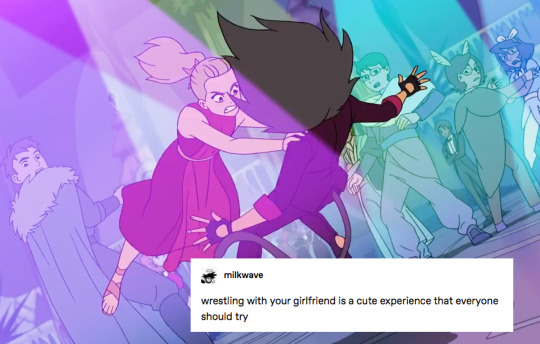




#spop#spop spoilers#spop season 5 spoilers#entrapta#hordak#horde prime#perfuma#mermista#sea hawk#adora#double trouble#catra#textpost#spop textpost
3K notes
·
View notes
Text
I’ve seen some complaints that Gabriel had somehow been redeemed in the finale, and that the show was disgusting for celebrating an abuser, and like
No
That’s the exact opposite of what happened
Marinette made it a point to give Gabriel one last chance to take accountability and finally become a good father to Adrien. Not only did he turn her down, but he straight up attacked her and carried on with his plan, convinced of his own moral superiority the entire time
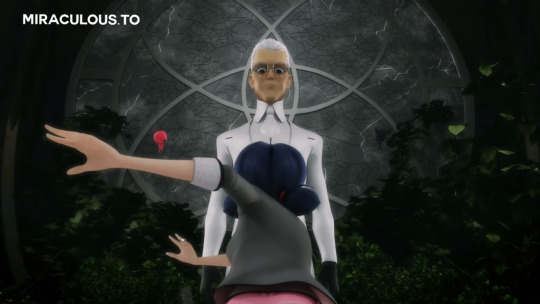
Whether or not his last act was to bring back Emilie or to try to fix the damage he caused ultimately does not matter. It has been hammered into our brains, repeatedly, that making the wish is dangerous, irresponsible, and a refusal to accept the notion of mortality AS A GROWN ASS ADULT. But whatever the inevitable consequences turn out to be — he won’t be around to experience them.
We know what a redemption arc (admittedly incomplete, but hopefully on its way to being wrapped up in S6) looks like in Miraculous, and it’s significant that this jerk managed to miss all the marks a fourteen-year-old successfully hit:
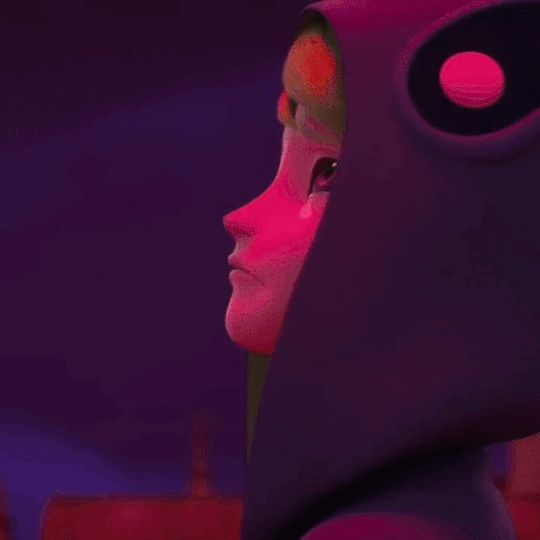

Gabriel will never have to face any legal repercussions for terrorising an entire city for a year, nor for trying to take over the world. He will never have to explain to Adrien what this cruel charade was all for. This poor child is going to break next season, and that statue is 1,000% getting cataclysmed, but it doesn’t matter. The person who hurt him isn’t there anymore. No justice can be achieved.
In other words, he did not get redeemed. He pulled a Shadow Weaver.

#miraculous ladybug#gabriel agreste#hawkmoth#monarch#felix graham de vanily#argos#adrien agreste#marinette dupain cheng#ladybug#bug noire#mlb spoilers#mlb recreation#ml recreation#recreation spoilers#re-creation spoilers#she ra#she ra and the princesses of power#spop#spop spoilers#shadow weaver#trigger warning: child abuse#random ramblings
488 notes
·
View notes
Text
Thinking about Glimmer again.
Specifically lately thinking about the delicious tragedy that is how much she loves and revels the full power of the Moonstone and how, since Angella was immortal, she never would have moved beyond needing to recharge her entire existence unless Angella lost her connection to it.
All the joy and desire for power Glimmer has regarding her abilities with full connection to the Moonstone are tainted by this reality but now that she has it... would she give it up? I think she would, but it would plant dark seed of resentment. Especially as Adora grows in power. Glimmer can't stand to feel powerless and also she takes great desires in being powerful.
I think that's one reason she goes so hard on the magic Shadow Weaver teachers her. Only that magic is untainted as it's not being contingent on the loss of her mother. It's something I don't think Bow or Adora could totally understand.
It's just so good and so sad and I love Glimmer so much.
#thinking about her again#Glimmer#glimmer spop#tfg rambles#La de da#spop#spop spoilers#she ra spoilers
123 notes
·
View notes
Text
Controversial She Ra take: as much as I liked the show, catradora is unrealistic. I'll explain this shortly, might make a longer post about this later.
Catra has always been very abusive towards not only Adora and her friends, but literally everyone else she has ever met. According to the show Catra "turned good" towards the ending, but it's not realistic for anyone to stop their abusive behavior just like that, especially not for Catra. Let's not forget Catra's a literal war criminal. I would've found it much more interesting if Adora learned how to deal with her feelings for Catra in a healthy way, without them ending up together.
Btw I have no issue with catradora shippers, I'm just criticising the show. It's not a huge issue but it's been bugging me for a while.
#spoilers#she ra spoilers#spop spoilers#she ra#spop#she ra and the princesses of power#my post#catra#adora#anti catradora#fandom discourse
108 notes
·
View notes
Text
I loved the music from Princess Prom so much that I wanted to recreate it, but I'm a guitarist so I covered it replacing all the synth parts with guitars. I tried to get different guitar sounds that captured the spirit of the original parts.
SPOP fandom I'd really appreciate your reblogs on this because I do not have a lot of followers.
If people are interested I could talk a bit about how I did it. It was an interesting arrangement challenge. I could probably tweak it a bit more but I'm just excited to share it.
81 notes
·
View notes
Text
Tell me how "Corridors" is simultaneously one of the funniest and most heartbreaking episodes of SPOP. Bow trying to manage Entrapta and Adora at the same time on a spaceship? Iconic. *Handyman* Adora tangled up in tape after she tackled a project very much out of her wheelhouse insisting she has "everything under control"? Incredible. Entrapta custom-making Bow a spacesuit will a midriff cutout? Unparalleled.
Meanwhile, Catra? Oh, she's being threatened with having her very soul torn from her through a creepy, painful religious ritual. She's having fundamental realizations about her life, childhood, and actions. Then she makes the most heartbreaking apology as she saves a friend while struggling against clones trying to drag her to her doom. Wild.
213 notes
·
View notes
Text
One more of the many things about SPoP that continues to blow my mind: Adora's gay the whole time.
Like, it would be one thing if Adora, like Catra, was just, unable to function in a framework that wasn't some broken version of their love for each other, and thus was a romantic black hole until season 5, but like, here's the thing:
Adora gets flustered and flirty around girls. Repeatedly.
Oh, h-hey Huntara those sure are... muscles owo;
Oh wow random moth lady you just hugged me and oh wow do I have some feelings right now he he he
Like, she's not even a "sporty and not into boys so, y'knowwwww, right?? we all know, riiiiight" kind of gay girl, she's a "oh no that girl is HOT help" gay girl and just. Wow. It's so appreciated.
347 notes
·
View notes
Text
How She-Ra and the Princesses of Power Uses Traditional Fairy Tale Archetypes and Motifs to Reinvent the Love Story
(This is based on a 15-page final paper I wrote for my Queer Theory class last semester. Link to that if you want to read it or see the format is at the end.)

The SPOP finale is one that consistently has me SOBBING. Not only because it’s such a beautiful portrayal of a kiss shared between two female leads portrayed on a kid’s show, but because the kiss itself is so utterly significant to the story that I cannot see a more perfect ending for the climax overall.
What really struck me thinking about it later on was the fact that traditional fairy tales have always made me hate the “true love’s kiss saves the world” trope because it has always felt so ingenuine, and yet for the SPOP finale, it could not feel more genuine and real (and it wasn’t just because I loved seeing a queer kiss because prior to this I’ve had many straight ships I’ve enjoyed). The deeper I fell into investigating the structure of SPOP and the motifs it uses (She-Ra as a savior, Catra as a villain, princess tropes, etc), the more I understood that this show isn’t just revolutionary to queer animation, it’s revolutionary toward the fairy tale love story as a whole, and I’m going to explain why.
The world of Etheria is one that exists without a dominant sexuality or gender. It’s something I’ve began to notice more in my favorite shows (the two that I can think of off the top of my head is SPOP and The Owl House). These fantasy worlds portray sexuality without putting so much significance to it--Bow and Willow have two dads and nobody bats an eye, they/them pronouns are used so casually you’d think it’d be the norm in the real life, Amity’s mom doesn’t approve of Luz not because they’re both girls but because she’s considered a criminal and she wants to get her a different girlfriend--notice how queerness is something that just exists, there’s no "coming out” or no queerphobia because it just doesn’t exist. People just are who they are and love who they want to love. It’s as if every sexuality and gender is treated with normalcy.
The best example in SPOP is the whole episode involving Bow coming out as a rebel to his gay parents. The whole irony of the situation just establishes that queerness is not considered out of the norm in Etheria. If it did, you’d see some sort of reference to the way his dads had to come out to their family or their community in some way, but you don’t because they didn’t have to come out. There is no closet when it comes to gender and sexuality in Etheria--you just are who you are.

There’s this very interesting concept called the “heterosexual imaginary” that basically states how straightness is basically invisible in our world because it’s considered the norm (the essay Sex In Public by Berlant and Warner describes it as “the givenness of male-female sexual relations [that] is part of the ordinary rightness of [our] world”). This imaginary or “givenness” does not exist in the universes of SPOP and TOH, and it is why these stories can pull off queer relationships and characters without needing the stereotypical coming out episode or homophobia episode a show based in our world would generally have. You’d think it’d be a norm in every fantasy world to have this seeing as it’s a fantasy world and it’s weird that one would function with our set of norms but anyway.
This directly ties to a quote that Stevenson made that I just love:
The show’s not a romance show. It is about a lot of things. It’s about choice, destiny, fighting, tyrants, you know, all of these other things. I grew up with so many stories—like sci-fi and fantasy—that I was so passionate about. And it would be considered no big deal to have the hero get the girl and to have a kiss at the end, without it suddenly becoming a romance or ‘Oh, the shippers got what they wanted.’ It was just a part of the story.
We see this in sooooo many fantasy stories! If it was any other sexuality, you’d see these kinds of arguments all the times--”shoved in your throat,” “inappropriate,” “not for kids”--we see these arguments all the time when it comes to queer relationships but nobody bats an eye when a guy gets the girl at the end of a coming of age journey, do they? It doesn’t suddenly turn the whole story into a straight romance, it’s just a part of the story. That’s the heterosexual imaginary in action!
Now, when it comes to traditional Disney fairy tales, oh boy do we get compulsory heterosexuality everywhere. These stories already have a reputation for building a pretty unhealthy view of romantic love (or assuming that all love is romantic in the first place), though they have been getting much better at it (and by better I mean Pixar... it’s literally Pixar holding their weight).
Especially when it comes to princess stories, “a heterosexual romance is inevitable and often a central conclusion” (England, Descartes, & Collier-Meek 565).

Let me make it clear: SPOP is not a romance. It is a love story, but it is not the romance, and here’s the difference.
A love story uses a romantic relationship (or another type of relationship between two people who love each other) as an impediment or a facilitator to focus on a message outside of romantic love. A romance focuses on the actual romantic relationship itself.
These terms are often confused because the “traditional Disney definition of true love” (Rojas 13) shapes our expectations of a love story. In framing this heterosexual love as the primary purpose of female leads, these stories “help to reinforce the desirability of traditional gender conformity” (England, Descartes, & Collier-Meek 565). They build narratives that revolve around a princess (who upholds feminine ideals) finding her prince (who upholds masculine ideals) and depict their love as relying on their “fated” bond that “cements over the course of… one meeting” and that “endures a test where the man overcomes hardships and succeeds in rescuing the woman from evil” (Rojas 13). This love story ends with a kiss, a marriage, and a happily ever that upholds the social order.

Since these love stories shape our perception of love as children, as adults, we interpret ‘true love’ as a frivolous concept that only exists in fairy tales; as such, it is common to discredit the romance genre for its superficiality and degrade the message of any love story to this expectation of superficial love. Consequently, because “the givenness of male-female sexual relations” (Berlant & Warner 168) allows heterosexuality to function in a state of invisibility, heterosexual love stories can end with a romantic union without it demeaning the story whereas queer love is degraded to ‘just another dumb love story’ instead of “a part of the story” (Stevenson).
But Catradora isn’t just another dumb love story. It is the foundation of SPOP as a whole because it’s what drives the story. The most interesting part is that SPOP uses so many traditional motifs that you’d think would only serve toward maintaining patriarchal norms and it uses them in such a meaningful way that transforms them into so much more!
Let’s start with the character motifs--the savior, the princess, the villain, and the damsel (and there’s a reason why I am separating the princess and the damsel). Adora functions as a savior and a princess while Catra functions as a villain and a damsel, and I know it sounds ridiculous right now but hear me out. The gender messaging inherently attached to these archetypes are a part of the narratives that Shadow Weaver builds to manipulate them so she can have control over them.
Let’s start with the savior, aka the knight in shining armor. This one’s pretty easy to tie to Adora because her savior complex is what drives her whole arc. But I’m taking it further to explain how it ties to the messaging behind the archetypical savior. The knight in shining armor archetype is build upon the foundation that a woman is a man’s responsibility--it is clear the man is generally the one portrayed as independent and the woman he must save is the dependent. The woman needs the man to live. We see this archetype in sooo many princess stories (Rapunzel, Snow White, Cinderella, etc.) Now think about the way Shadow Weaver manipulates Adora to adopt this mindset.

Shadow Weaver expects Adora to “[keep Catra] under control” (”Promise” 16:48), that what Catra does is her responsibility as if Catra isn’t her own person outside of Adora. This is what builds Adora’s “caretaker” role in their codependent relationship at the beginning of the series--this is what causes her to adopt her savior complex.
Similarly, as a scapegoat, Catra was conditioned to be Adora’s ‘taker,’ and Shadow Weaver viewed her as a “nuisance… [only kept around] because Adora was fond of [her]” (16:20). This narrative results in Catra’s Cinderella Complex, the “repressed attitudes” that lead women to believe “they are simply damsels in distress and will remain so until the rescue of their male suitors” (Saha & Safri qtd. in Ding 23), at the beginning of the story, for as the damsel archetype upholds, a woman is worth nothing past being an extension of the man that owns her. In this sense, Shadow Weaver describes Catra as an extension of Adora—everything she does is tied back to Adora, for she does not have an identity outside of her. Catra needs Adora to survive--both emotionally and literally because who knows what Shadow Weaver would’ve done with her had Adora not been “fond of her.”
When Adora defects, their codependent roles collapse, and following her ‘caretaker’ role, she seeks to be the savior as She-Ra whereas Catra entirely loses the person she relies on for her sense of self. Seeking her worth elsewhere, Catra pursues their original goal to move up the ranks of the horde alone, and deep into her resentment for being abandoned by her ‘caretaker’ and the only person she loves, she turns to villainy and seeks to defeat Adora.
The scene that most clearly portrays this savior-damsel dynamic between Adora and Catra at the beginning of the story is “Promise.”
“Promise” highlights her rejection of her damsel narrative when Adora fails to save Catra from being dragged away by the spider. We see her default into helplessly calling for Adora with tears in her eyes even though we know she’s capable of taking out that spider herself, she still instinctively fills her damsel role and calls out for Adora to save her. Then we see her look into an empty hallway, and it’s almost as if this is what goes through her mind: Adora abandoned me, therefore Adora is not coming to save me, but I don’t need Adora to save me, I can save myself.
Consumed by her resentment over Adora breaking her narrative and being confined within her own, she proves Shadow Weaver wrong by resolutely fighting back—a capability she always possessed but that her dependency on Adora and Shadow Weaver’s manipulation prevented her from acting upon.
Alongside that, Adora’s ‘heroic’ save just before Catra finishes off the spider and her condescending chuckle and “sure you did” after Catra argues that she “had it” (13:47) emphasize how ingrained these detrimental narratives are within their perceptions, for the mere idea of Catra not needing her is a joke to Adora. The purpose of “Promise” is to divorce Catra from her Cinderella Complex, but in spite of abandoning this narrative, she falls into another by misconstruing Adora’s heroism as a manipulative tactic to hold her back (20:07), and it drives her into her obsession to make Adora fail to prove herself that she can be above.

Yet Adora’s Savior Complex was also a result of Shadow Weaver’s manipulation because, apart from enabling Adora’s belief that she was responsible for Catra, she believed her worth relied on her success as her prodigy. As Kyle the Scott explains in his video essay about the hero mindset, SPOP “does not present the argument that heroism is bad” but it “[questions] how healthy the hero mindset really is… [and] what kind of effect thinking of yourself and others in this way have on a person” (Scott, 7:58).
Throughout the series, it is made clear that Adora’s Savior Complex not only drives her to believe she is worth nothing past her destiny to save Etheria but that she is the only one capable. This belief relates to Adora’s state as a princess, for in the way a passive princess must give everything of herself to serve her man and her society, Adora had to give everything to earn Shadow Weaver’s motherly love, and, later on, she had to give everything to become the hero of Etheria. As such, Adora is not passive in that she is powerless, she is passive in her state as a chosen one lacking agency over her destiny and her belief that her worth relies on what she can offer others.
This extreme selflessness or “ability to show love” (Davis 125) contrasts Catra’s state as a villain, otherwise characterized by her predisposition toward hatred or her “[inability] to demonstrate love” (Ding 15). The archetype of a villainess sends the message that it is “wrong and deceitful for women to be independent and powerful… [and pushes] them to adopt more submissive roles and behaviors” (Ding 16). While Catra describes Adora as a “people-pleaser” (which confines her within her princess archetype), Catra has always steered toward rebellion because Shadow Weaver put her down no matter what she did right, and her rebellion (or “disrespect” as Adora calls it) is deemed a negative because it gives Shadow Weaver less control over her in the same way the archetypal villainess is demonized for defying gender roles.
However, Catra’s descent into villainy was another narrative she confined herself to because she sought power to prove her strength to Shadow Weaver and everyone who put her down, but internally, it was a method of self-preservation since she no longer had her ‘caretaker’ to protect her. As Catra gains power and attempts to convince herself she hates Adora, it becomes evident that her motive was never “ruling Etheria,” it was always about the two of them staying together. Hence, Catra is not a villain because she is heartless or because she craves power; it is due to her use of lashing out as a method of self-preservation and her inability to express her emotions that she falls into the cycle of self-destruction that makes her one. As such, Adora and Catra’s detrimental actions and beliefs about themselves are driven by these confining narratives Shadow Weaver imposed on them which mirror the gendered messages behind these archetypes, and it is these narratives that they transcend at the climax of their love story.
Now let’s fast forward to the Season 5 during the episodes they spend outside of Etheria, specifically I’ll focus on “Corridors,” “Save the Cat,” and “Taking Control” because these are the key for the foundation of Catra’s redemption, Adora’s growth, and the reconciliation of their relationship. This will help prove the power of their love is what helps them break away from their narratives (and it sounds so cheesy but it’s executed so well you barely notice).
I’m going to quote a lot of Five by Five Takes on Youtube because she has some AMAZING takes of this show. Catra’s reflection in “Corridors” reveals that her fear of abandonment ranged back to their childhood, for when Adora made friends with others, Catra perceived it as an attempt to replace her—that if “she wasn’t Adora’s priority… she didn’t matter at all” (“She Ra's Corridors Isn't What You Think” 1:43).
Now, having pushed everyone away for her power trip, at the last step of her journey to the top, when she reflects upon Adora’s words as a child, she recognizes this “safety, friendship, love she turned away from because she didn’t believe it could be real” ( “She Ra's Corridors Isn't What You Think” 1:46) and realizes that resigning herself to villainy is not her only path, for “it’s only too late when you’ve resigned yourself to that” ( “She Ra's Corridors Isn't What You Think” 4:47).

In her choice to save Glimmer, she breaks her cycle of self-destruction and “reclaims her identity… her narrative, to be about her [and] not about someone else” (“She Ra's Corridors Isn't What You Think” 3:08). It is the memory of her love for Adora—the love she rejected because she confined herself to her villain narrative to keep herself safe and to prove she could form an identity outside of Adora—that sets her on her path to redemption. So in this way, their love impedes and facilitates Catra’s coming-of-age journey because it was her attempt to reject this love that drove her into villainy and her acceptance of it that gets her out.
“Save the Cat” is a turning point in Adora’s journey because, in breaking out of her savior and princess narratives, she discovers that She-Ra is driven by her most authentic self. By choosing to rescue Catra, Adora puts her responsibility as a hero aside and acts for herself. For once, her decision is not selfless because she’s endangering her team and Etheria by going to save someone who has been the villain for so long.
She also does not make this decision because she feels responsible for Catra, for we see her abandon this feeling in the episode “The Portal” when she stops attempting to pull Catra into the good side and stops holding back during their confrontations now that she understands Catra is her own person and that she is not responsible for her bad decisions.

Thus, in saving Catra because she has hope for her and not because she ‘needs’ to, Adora rejects her savior and princess narratives. Furthermore, it is the “need to protect” the person she loves and her “purity of emotion” that allows her to channel her most powerful and authentic self (Stevenson), so while Prime embodies lack of identity and agency, Adora embodies embracing love and authenticity. Along the same lines as Catra, Adora confined herself within her narratives by putting her obligations above her feelings for Catra, and she freed herself from them by putting the person she loves above the world.

“Taking Control” marks another turning point in their relationship because we see them communicating and actively reconciling their relationship. By putting herself in a vulnerable position and telling Adora that “[she wants] to go home” (16:56) despite having told Glimmer “there is nothing left for [her there] (“Corridors” 6:20), Catra implies that Adora is her home, and, in making an active effort toward fixing her anger issues and getting to know Adora’s friends, she shows she wants Adora to be part of her life again. Furthermore, the way she lets Adora help and comfort her shows she no longer links vulnerability to being submissive, and she puts aside her fear of falling back into her damsel narrative now that their separation has given her time to find an identity outside of Adora.
So these three episodes mark a turning point for their relationship—one that is no longer based on dependency but on supporting each other’s growth, being honest about their mistakes, and letting themselves be vulnerable.
And then... “Failsafe” happens.
Their return to Etheria is also their reunion with Shadow Weaver, and their regression into her narratives impede them from admitting their feelings for each other and being authentic to themselves. Once more, they get stuck in these narratives Shadow Weaver has weaved into their core.
The good news is their growth and the progress they have accomplished in mending their relationship reflects in the way they reject Shadow Weaver’s influence and defend each other. Furthermore, the improvement of their communication reflects in the way Catra voices why she is upset and Adora expresses she needs Catra by asking for her support. So their rejection of Shadow Weaver’s narratives allows them both to support and be supportive, and their relationship is no longer codependent because they exist on equal grounds now.
Unfortunately, Shadow Weaver’s presence still triggers Catra’s insecurities about feeling wanted and Adora’s fear of failure.
Shadow Weaver uses their reconciliation to her advantage in the way she weaponizes Adora’s feelings for Catra by convincing her she must focus on “protecting [Catra]” instead of letting her distract her. She also breaks Adora’s identity apart by describing She-Ra as an entity outside of her, even though She-Ra is Adora at her purest ( “the world needs you as She-Ra… not Adora” (”Failsafe” 12:12).
Thus, Adora’s regression into her savior complex turns her into a martyr, for what she wants for herself does not matter because she must protect the world and her friends. In telling Catra that “even if [Shadow Weaver] is [sacrificing her]… [it] is the only way” (16:29), Adora conveys that she is, yet again, willing to abandon Catra and sacrifice her own life for the rest of the world even though, as Catra tries to convince her, “it doesn’t always have to be [her]” (17:54).

Here, Adora regresses so deep into her narratives for fear of losing those she loves that she believes she is acting of her own volition and not Shadow Weaver’s influence. Yet Adora does not have to be the one to make a sacrifice; as Catra points out, Shadow Weaver is capable of taking the heart herself, but she does not because she knows Adora’s savior complex will drive her to believe it has to be her.
In asking her what she wants, Catra is really asking Adora to choose between their relationship and her heroism, and when Adora responds that “[she has] to do this” (21:25), Catra perceives it as Adora willingly resigning to Shadow Weaver’s narrative by “[choosing] Shadow Weaver and not [her]” (“The Heart (Part 1)” 4:56) and not loving her enough to stay because she has never needed Catra (21:40), so she leaves. In the same way Adora acknowledged Catra was her own person who made her own choices in the episode “The Portal,” Catra acknowledges here that she cannot change Adora’s choice no matter how self-destructive it might be. Hence, it is their failure to accept their true feelings that hold them back from being authentic to themselves, for Adora does not allow herself to want and Catra does not want to confess because she believes “Adora doesn’t want [her]... like [she wants] her” (“The Heart (Part 1)” 5:00).
And now, finally, let’s talk about true love’s kiss--one of the oldest fairy tale tropes in the book.
True love’s kiss is the deus ex machina of countless fairy tales, but although true love’s kiss does save the day in SPOP, its significance relies on Adora and Catra transcending the narratives Shadow Weaver imposed upon them and embracing their love and their authentic selves. It is not merely a magically ending--it is them admitting what they’ve been holding out on for FIVE SEASONS that allows She-Ra to transform. That is how they save the world. Stevenson says it himself:
This moment of confession is the climax of the show. It is everything [they have] been building up to.”
Even though it is its magic that saves the day, true love’s kiss feels authentic here because of what the magic represents. In SPOP, magic stands for authenticity, connection, and love—all of which express humanity.
At the climax of their story, having lost her ability to transform, Adora begs Catra to leave so she can do the next part on her own—primarily, Adora knows how much she has hurt Catra, so she does not want her to witness her sacrifice. Catra’s choice to stay is a selfless act because she willingly puts herself in a vulnerable position by risking being hurt in the worst way possible. Meanwhile, Adora’s “beautiful wish,” as Prime calls it, externalizes what she wants and is not letting herself have because “[she is] She-Ra” and sacrificing herself “is what [she is] supposed to do.” However, in expressing that “[she deserves] love too” (“The Heart (Part 1)” 17:32), Mara tells Adora that she is allowed to be selfish—she is allowed to want and to receive love. She is “worth more than what [she] can give to other people” (17:30). So in confessing her love, Catra externalizes Mara’s words to Adora.

Despite her best friends claiming to love her for her and not She-Ra, Adora cannot be certain of this because they only became friends after she found the sword. So when the person she cares for the most and who she has also unintentionally hurt the most reveals that she not only loves her but that she has always loved her, it disproves her damaging perception of her worth. It allows Adora to unchain herself from the narratives that have been holding her back from expressing her wants and her feelings. When Adora confesses her love, she chooses Catra for the first time, and she disproves Catra’s belief that Adora does not want her.
The magic behind their true love’s kiss does not rely on superficial rules about love that paint it as a fantasy. On the contrary, it is the humanity behind it—Adora’s acceptance that she deserves love and a future for herself, her rejection of the expectations the world has reduced her to, and their mutual love—that gives Adora the power to transform and save Etheria. In opening their hearts, the magic at the heart is released and it revitalizes the planet, reverting it to its authentic state in the same way it does for them. As Five by Five Takes points out, we even see this in the amount of ‘I love you’s’ exchanged between all the characters—between lovers, friends, and family. The climax also contrasts their narratives, for as opposed to saving Catra, Adora is saved by Catra, and Catra’s “inability to show love” as a villain opposes the way her showing her love saves the world.
As Five by Five Takes explains in her video How She Ra Gives Us Hope, “the conflict [of SPOP] was never love or power, it was authentic connection versus outside manipulation: our genuine selves against the constructs imposed on us” (10:13). Having been divided and at odds for five seasons, having been abused and forced into narratives that stripped them of their identity and agency, and having grown and experienced hardships together and apart, concluding the story on a mutual confession and a true love’s kiss between Adora and Catra establishes their feelings, their wants, and their love are connected to the core of their identities and their coming-of-age journeys as they exist with and outside of each other.
“With Disney specifically, their conceptualization of romantic love is one that follows along with a set of ideals that define perfect love” (Bell, 1975; Sprecher & Metts, 1989 qtd in Ding, 2021), and it is these limitations that paint love as an unachievable fantasy that make these love stories superficial. These stories depict idealized models of men and women that are nothing more than hollow shells written into narratives confined by heteronormativity and gender norms. Such as the ones Shadow Weaver imposes upon Adora and Catra, “whatever you call them—narratives, expectations—these things that tell us who we are, really, are just about control” (“How She-Ra Gives Us Hope” 16:11).
SPOP illustrates a beautiful love story that can serve as a metaphor for the way queer love can rise above the narratives heteronormativity confines it within while reinventing the same archetypes and motifs traditionally catered to reinforcing this heteronormativity and without resolving to topics like homophobia or discovering sexuality, for, in Etheria, love is humanity and love is love. Whereas the resolution of Disney love stories relies on princesses giving up their agency to pursue their role as a wife and a woman in a patriarchal society, SPOP has both its female leads rejecting narratives that allow them to reclaim their agency, their identity, their lives, and their love, not only in their universe but also in ours.
Then there’s the “happily ever after” motif. In Disney fairy tales, happily ever after’s capture beautiful images with “little details” like “fireflies, butterflies, sunsets, wind, and the beauty and power of nature… a link to the naturalness of hetero-romantic love… [that depict] these loving scenes of heterosexual love as the most natural and magical form of love” (Ding 34). In this way, it teaches children “a distorted concept of romantic love at… a young age” that “poses an issue for the harsh reality that love and relationships actually exist as” (Ding 49).
The ending of SPOP captures a magical scene similar to the one described above where Adora and Catra stand upon a hill with their foreheads against each other before a rising light in a new and healing Etheria. Ironically, this beautiful image is not heartwarming because it glorifies their relationship. Their love story was never perfect—there was hardship, tragedy, mistakes, and heartbreak. Instead, the warmth in this image comes from the characters’ perseverance, acceptance, growth, and hope. It comes from having witnessed the coming-of-age stories of two abused best friends who have finally reunited and confessed their love.

Even though SPOP is a fantasy, in Etheria, true love is authentic—it is not a fairy tale concept. Its magic is intrinsically tied to the human truths expressed through its characters and their stories. SPOP redefines a love story by giving these traditional fairy tale motifs a purpose past enforcing gender norms and a glorified image of heterosexual love. Thus, it proves it is possible to redefine the fairy tale love story outside of these heteronormative narratives for “to be against heteronormativity is not to be against norms” (Berlant & Warner 170) nor is it to condemn these motifs or eliminate them from love stories altogether. Instead, we must infuse them with a new meaning—one that focuses on the truths and the complexity behind our humanity—that conveys the message that love is real and that love is love without losing its magic.
If you got this far, thanks for reading :)
(Original essay linked in the notes)
Works Cited
Berlant, Lauren, and Michael Warner. “Sex in Public.” The Routledge Queer Studies Reader, 2013, pp. 165–179.
Brown, Tracy. “In Netflix's 'She-Ra,' Even Villains Respect Nonbinary Pronouns.” Los Angeles Times, Los Angeles Times, 6 Nov. 2019.
Davis, Amy. Good Girls and Wicked Witches: Women in Disney's Feature Animation. John Libbey Publishing. 2007.
Ding, Shay. Overexposure to Disney Princess Animated Films: Disfigured Perception of Gender and Love In Adolescents. 2021.
England, D.E., Descartes, L. & Collier-Meek, M.A. “Gender Role Portrayal and the Disney Princesses.” Sex Roles 64, 555–567, 10 February 2011.
“Failsafe” She-Ra and the Princesses of Power, created by Noelle Stevenson, season 5, episode 11, Netflix, 2018.
“How She Ra Gives Us Hope.” YouTube, uploaded by Five by Five Takes, 29 July 2020.
“Promise” She-Ra and the Princesses of Power, created by Noelle Stevenson, season 1, episode 11, Netflix, 2018.
“Reunion” She-Ra and the Princesses of Power, created by Noelle Stevenson, season 2, episode 7, Netflix, 2018.
Rojas, Camila. Confronting Traditional Love: The Evolution of the Representation of ‘True Love’ in Disney’s Princess Movies (1990s to the Present). 2015. Universitat Autònoma de Barcelona, dissertation.
Scott, Kyle. “She-Ra and the Hero Mindset: Video Essay.” YouTube, uploaded by Kyle the Scott, 24 March 2021.
“She Ra's Corridors Isn't What You Think.” Youtube, uploaded by Five by Five Takes, 8 August 2020.
Stevenson, Noelle. “She-Ra’s Noelle Stevenson Tells Us How Difficult It Was To Bring Adora And Catra Home.” Interview by Beth Elderkin. Gizmodo, 13 July 2019.
Stevenson, Noelle. “She-Ra showrunner, stars break down Adora's new look with exclusive clip.” Interview by Christian Holub. Entertainment Weekly, 16 May 2020.
“System Failure” She-Ra and the Princesses of Power, created by Noelle Stevenson, season 1, episode 6, Netflix, 2018.
“The Heart (Part 1)” She-Ra and the Princesses of Power, created by Noelle Stevenson, season 5, episode 12, Netflix, 2018.
“The Heart (Part 2)” She-Ra and the Princesses of Power, created by Noelle Stevenson, season 5, episode 13, Netflix, 2018.
#spop#she ra and the princesses of power#catradora#adora#catra#spop analysis#spop spoilers#sapphic#queer love
584 notes
·
View notes
Note
It is so fascinating to me how both of ND Stevenson’s defining classic works (SPOP and “Nimona”) have main antagonists who are completely and utterly…nameless. They have no identity or names of their own. They are just…the Director of the Institute and the Prime of the Horde.
Holy shit I never realized that. Honestly considering both of these works feel very much like religious allegories it kinda reminds me of like. How do many times you'll hear religious figures just be called. The Pope. The priest. Like they have names but your first impulse is to just go Priest. Pope. And also god just being God. Also the Director always acting like "I exist to serve gloreths will." But her own bigotry is wrapped up in it. She uses Gloreths will as a justification to others and herself, where have I heard that before. And Horde Prime is just. Do I even have to say anything. All beings must suffer to become pure. The deadset on suffering as redemption. The fucking BAPTISM. The light. The fact he sounds like he's speaking in damn Bible verses in his last lines. It all feels very purposeful ngl. So yeah it all feels very That to me.
#she ra spoilers#spop spoilers#shera spoilers#nimona spoilers#nimona#shera#she ra#spop#tw religion#tw religious themes#august don't look
388 notes
·
View notes
Text



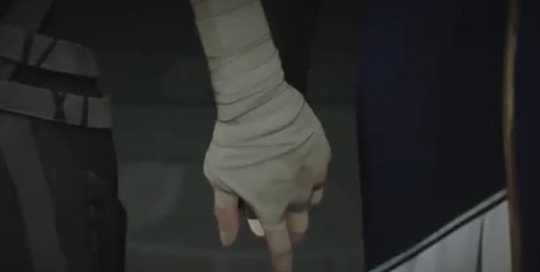


Animated queer hand holds give me life ✨
#just got a lot of feelings tonight guys#I love them all so much#janaya#violyn#caitvi#benson x troy#korrasami#catradora#lumity#tdp spoilers#arcane spoilers#kipo spoilers#lok spoilers#spop spoilers#toh spoilers
358 notes
·
View notes
Text

always wanted to draw something like this back in the day, but never had the skill, as I was fifteen and very bad at anatomy (and basically everything else), so here’s hordak showing entrapta the stars!!
#she ra#fanart#she ra season five#spop s5#hordak#illustration#entrapdak#entrapta#entrapdak art#spop spoilers#entrapdak vibes#she ra entrapta#in this house we stan hordak#she ra fanart#spop fanart
680 notes
·
View notes
Text

After 5 seasons I was really worried they weren't actually gonna kiss, really happy when it finally happened though!
52 notes
·
View notes
Text
my little sister is rewatching the end of spop on the tv rn and I turned around from my sewing and caught the scenes where catra leaves camp in episode 11 ok. like when I turned around adora was running after her and I watched all the way through to the end of the episode a minute or two later and what struck me the most about it and what often strikes me about that scene that gets overshadowed by the lesbianism of it all is the actual chase part LMAO like. it's very short in the actual time it takes up but when catra realizes adora is coming after her she jumps up into a tree and then adora jumps up after her to tackle her to the ground and they fall together and then catra tries to crawl away and adora drags her back by th ankle to flop on top of her to bodily stop her from getting away again. it happens really fast but it's like a three step affair that recalls their lives spent doing this sort of scuffling for fun growing up together under shadow weavers care. and I don't usually think about it for long but I do notice it every single time I watch
15 notes
·
View notes
Text
VILLAIN
I gave in to my desires and did an Entrapta-Hordak role swap I'm sorry....
This would never make sense in canon but I wanted an excuse to draw Entrapta staring at someone in disappointment or dislike
Hordak in this AU was uhhhh
made by??? a scientist slash mechanic??? and hordak???????? continued his creator's works????????????? idk?????? but they meet somehow im just not sure h o w
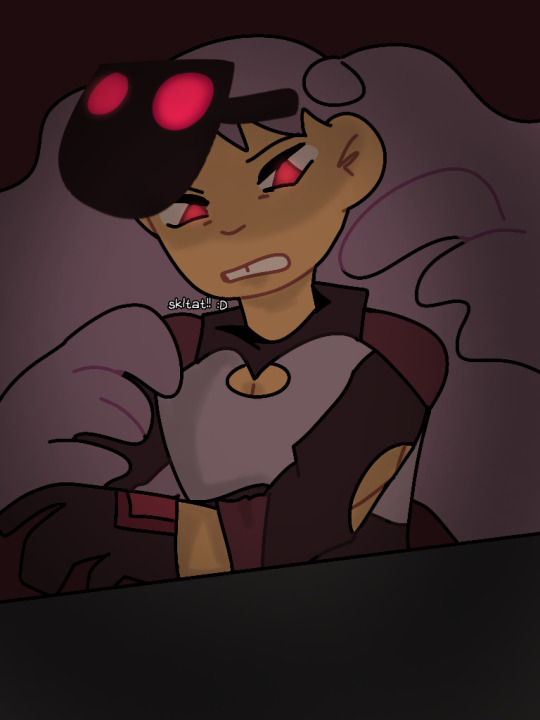

#entrapdak#entrapta#hordak#role swap au#my art#idk how to tag this#spop entrapta#spop fanart#spop spoilers
79 notes
·
View notes